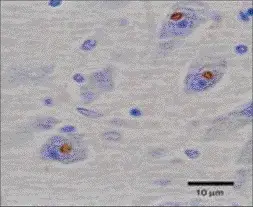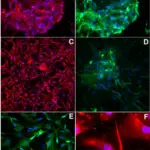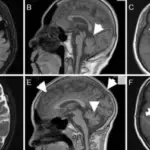Fragile X tremor ataxia is a late-onset neurodegenerative disorder most frequently seen in male premutation carriers of Fragile X syndrome (FXS) over 50 years old.
What is the Pathology of Fragile X Tremor Ataxia?
The pathology of Fragile X tremor ataxia is:
-Etiology: The cause of Fragile X tremor ataxia is a trinucleotide repeat expansion of 50-200 CGG repeats in the Fragile X mental retardation-1 (FMR1) gene.
-Genes involved: Fragile X mental retardation-1 (FMR1) gene.
-Pathogenesis: The pathogenesis of FXTAS results from the direct neural cell toxicity of elevated levels of the expanded-CGG-repeat FMR1 mRNA (RNA toxic gain-of-function), which leads to dysregulation of a number of proteins including lamin A/C and alpha B crystallin.
How does Fragile X Tremor Ataxia Present?
Patients with Fragile X tremor ataxia typically males present at age range of over 50. The symptoms, features, and clinical findings associated with Fragile X tremor ataxia include an intention tremor, cerebellar ataxia, and parkinsonism.
How is Fragile X Tremor Ataxia Diagnosed?
Fragile X tremor ataxia is diagnosed using a combination of molecular, clinical, and radiological findings. Definite diagnosis is made using a major radiological finding and one major clinical finding must be present.
How is Fragile X Tremor Ataxia Treated?
Fragile X tremor ataxia is treated with medications for alleviating symptoms of tremor, ataxia, mood changes, anxiety, cognitive decline, dementia, neuropathic pain, or fibromyalgia. Neurological rehabilitation has not been studied for patients with FXTAS but should also be considered as a possible form of therapy. Additionally, occupational and physical therapy may help to improve function. There is no treatment modality aimed at reversing the pathology of FXTAS.
What is the Prognosis of Fragile X Tremor Ataxia?
The prognosis of Fragile X tremor ataxia varies widely between each case. The onset of symptoms may be gradual, with progression of the disease spanning multiple years or decades. Alternatively, symptoms may progress rapidly.



